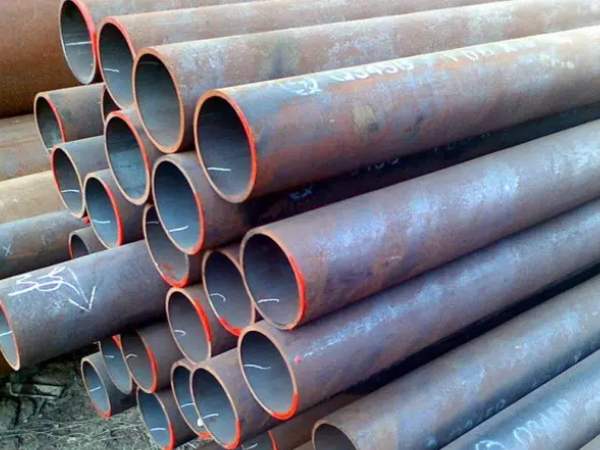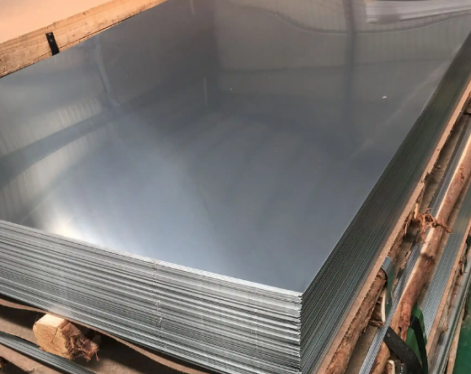Seamless pipe refers to a steel ingot or solid pipe blank that is perforated into a capillary pipe, and then hot-rolled, cold-rolled or cold-drawn. Compared with solid steel such as round steel, the steel pipe is lighter in weight when the bending and torsional strength is the same, and is an economical section steel. So what are the characteristics of its production and processing process?
1) Dimensional stability: for high-precision seamless pipes, the required precision is high, so the stability of seamless pipes sizes must be maintained. Due to the slow cooling speed of straightening in the air, it has a stabilizing effect on austenite, which will increase the number of retained austenite seamless pipes in the structure, so cold treatment must be performed;

2) Reduce quenching deformation: because the seamless pipe is slender, it is easy to deform during the quenching process, and its deformation must be strictly controlled. Heat treatment is a very critical process. In the process of quenching and cooling, the plasticity of supercooled austenite is used for timely alignment, which is a key step to ensure the improvement of the qualification rate of seamless pipes. After cooling for a certain period of time, perform thermal straightening; at the same time, it should be hung and heated during heating to reduce quenching deformation. For high-precision guide rails, gas nitriding or ion nitriding can be performed to reduce deformation.
3) High hardness: the seamless pipe mainly bears the contact fatigue load, so it must have high hardness, should be quenched, surface quenched or chemical heat treatment, etc., followed by low temperature tempering.
4) Since the fine casting of seamless pipe greatly exceeds that of cast iron, in order to prevent the defects such as shrinkage holes and shrinkage pine of seamless pipe from appearing in the casting, the casting process mostly adopts methods such as riser, cold hard iron and replenishment to complete the solidification sequence of the casting.
5) Due to the poor fluidity of the steel, in order to prevent the cast steel parts appear cold isolation and pouring leakage phenomenon, the wall thickness of the cast steel parts can not be less than 8mm; can choose dry casting type or hot casting type, appropriate to increase the pouring temperature, generally between 1520 ° C ~ 1600 ° C pouring. Keeping the flowing quality for a long time can improve the fluidity; however, if the pouring temperature is too high, the seamless pipe will have defects such as coarse grain, hot crack, porosity and sticky sand.
1) Dimensional stability: for high-precision seamless pipes, the required precision is high, so the stability of seamless pipes sizes must be maintained. Due to the slow cooling speed of straightening in the air, it has a stabilizing effect on austenite, which will increase the number of retained austenite seamless pipes in the structure, so cold treatment must be performed;

2) Reduce quenching deformation: because the seamless pipe is slender, it is easy to deform during the quenching process, and its deformation must be strictly controlled. Heat treatment is a very critical process. In the process of quenching and cooling, the plasticity of supercooled austenite is used for timely alignment, which is a key step to ensure the improvement of the qualification rate of seamless pipes. After cooling for a certain period of time, perform thermal straightening; at the same time, it should be hung and heated during heating to reduce quenching deformation. For high-precision guide rails, gas nitriding or ion nitriding can be performed to reduce deformation.
3) High hardness: the seamless pipe mainly bears the contact fatigue load, so it must have high hardness, should be quenched, surface quenched or chemical heat treatment, etc., followed by low temperature tempering.
4) Since the fine casting of seamless pipe greatly exceeds that of cast iron, in order to prevent the defects such as shrinkage holes and shrinkage pine of seamless pipe from appearing in the casting, the casting process mostly adopts methods such as riser, cold hard iron and replenishment to complete the solidification sequence of the casting.
5) Due to the poor fluidity of the steel, in order to prevent the cast steel parts appear cold isolation and pouring leakage phenomenon, the wall thickness of the cast steel parts can not be less than 8mm; can choose dry casting type or hot casting type, appropriate to increase the pouring temperature, generally between 1520 ° C ~ 1600 ° C pouring. Keeping the flowing quality for a long time can improve the fluidity; however, if the pouring temperature is too high, the seamless pipe will have defects such as coarse grain, hot crack, porosity and sticky sand.









